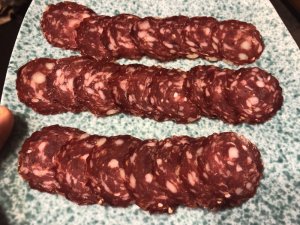Honestly, I am not trying to be jerk or put down anyone's practise, but by reading about UMAI I do question purpose of UMAI...
I have been drying, curing and cold smoking long enough to plea guilty for animal cruelty.... seems to me UMAI is waste of money knowing that I get same or most of the time better charcuterie results doing old traditional way.... ok, I do use zip-lock bags nova days and I am sure my grandpa would smack me (if he could) over the head from the heavens for using them...
Here is tested, for generations, the way to charcuterie without UMAI and with ziplock bag...It's all about temperature and humidity...
1. Get your meat..
2. Mix your cure and rub in to meat...
3. Place the meat in to ziplock bag and use the straw to draw the air out
4. Place the bag in to cool environment... one day curing in meat own juices per 1/4" thicknesses of the meat...
5. 12 hours desalination in cold water.. .
6. Rub the meat with spices if you like spices....
7. Hang the meat to dry @ 12 - 18 deg. C untill meat loses 30% of original weight....
8 Hope that white mould accumulate on meat... white mold is essentially penicilin and it is good sign that meat is healthy...
Why UMAI?
I have been drying, curing and cold smoking long enough to plea guilty for animal cruelty.... seems to me UMAI is waste of money knowing that I get same or most of the time better charcuterie results doing old traditional way.... ok, I do use zip-lock bags nova days and I am sure my grandpa would smack me (if he could) over the head from the heavens for using them...
Here is tested, for generations, the way to charcuterie without UMAI and with ziplock bag...It's all about temperature and humidity...
1. Get your meat..
2. Mix your cure and rub in to meat...
3. Place the meat in to ziplock bag and use the straw to draw the air out
4. Place the bag in to cool environment... one day curing in meat own juices per 1/4" thicknesses of the meat...
5. 12 hours desalination in cold water.. .
6. Rub the meat with spices if you like spices....
7. Hang the meat to dry @ 12 - 18 deg. C untill meat loses 30% of original weight....
8 Hope that white mould accumulate on meat... white mold is essentially penicilin and it is good sign that meat is healthy...
Why UMAI?
Last edited:







